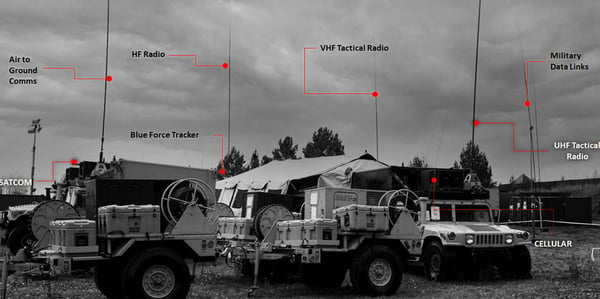Critical infrastructure protection
Passive RF solutions help protect critical infrastructure through 24/7/365 spectrum monitoring
Overview
From airports to embassies, critical facilities require the highest level of protection to combat threats from terrorism, espionage, criminal activity, and hostile foreign states. Also, Industry 4.0 and the widespread use of autonomous systems have substantially elevated the potential for attacks. Mitigating risk and identifying electromagnetic interference 24/7/365 is an operational and intelligence-gathering necessity.
While physical security, including bug sweeping, is essential, adopting a multi-layered approach provides the highest level of safety and security. Continuous real-time spectrum monitoring is essential to secure sensitive, critical facilities and meet modern threats.
Broad-bandwidth, highly sensitive RF sensors
24/7/365 monitoring
Passive RF alert & intelligence gathering
Technical surveillance counter measures (TCSM)
Detect low-power signals
Small-area sensor networks
Easy-to-use, autonomous spectrum monitoring software
RFeye SyncLinc for GPS-denied environments
Critical infrastructure protection applications
Airports
Airports rely on spectrum monitoring solutions to mitigate economic loss and risks associated with interference, jamming, and the escalating threat from COTS drones.
Space centers
Spectrum monitoring at space centers is crucial to ensure critical frequencies are free from interference, to protect public safety, and to safeguard RF-sensitive payloads from damaging transmissions that could cause in-orbit failures.
Port facilities and territorial waters
Ports are strategically and economically vital, yet their vast and porous nature makes them vulnerable to a range of threats. Integrating RF sensors enhances security by detecting and monitoring threats that exploit wireless technologies.
Quantum labs and data centers
Spectrum monitoring can help protect against hostile actors looking to steal data, trade secrets, and intellectual property—safeguarding national economies and security.
Commercial offices & financial institutions
Spectrum monitoring is critical to continuously and autonomously detect RF transmissions that could undermine security by facilitating industrial espionage.
Critical National Infrastructure (CNI)
As CNI relies on wireless communication and control systems, spectrum monitoring safeguards against malicious acts and ensures the reliability of these essential services.
Government buildings & embassies
Continuous and autonomous spectrum monitoring allows governments to have secure spaces free of bugging, interception, and eavesdropping.
Secure facilities & SCIFs
Spectrum monitoring is essential to immediately detect and locate unauthorized transmissions from electronic devices, ensuring that sensitive discussions remain protected from real-time surveillance breaches.
Talk to an advisor about infrastructure protection
CRFS expertise

Keeping airports safe – RF solutions for airports
This guide explores critical strategies for identifying and managing these risks, including RF interference detection, VHF and ILS compliance, GNSS jamming countermeasures, and advanced drone detection methods.

Augmenting port protection & security in territorial waters using RF technology
This guide discusses critical threats (from inside port facilities to the periphery of the nation’s EEZ). It demonstrates how adding RF technology to existing port security measures can help augment port protection and increase national security.

Augmenting border security & defense with Radio Frequency (RF) sensor technology
This white paper was guided by the results of a border security survey aimed at border control, border security, and military personnel tasked with national security and defense. It examines how RF sensor technology can be used to tackle modern border security threats.


ENSURING RF SPECTRUM SECURITY AT A HIGHLY SECURE FACILITY
How a security service detects and geolocates unwanted signals to safeguard national security
Read the storyDETECTING RF INTERFERENCE AT ONE OF THE WORLD’S BUSIEST SPACEPORTS
How a spaceport operator ensures the integrity of its payloads with 24/7/365 RF monitoring
Read the story

